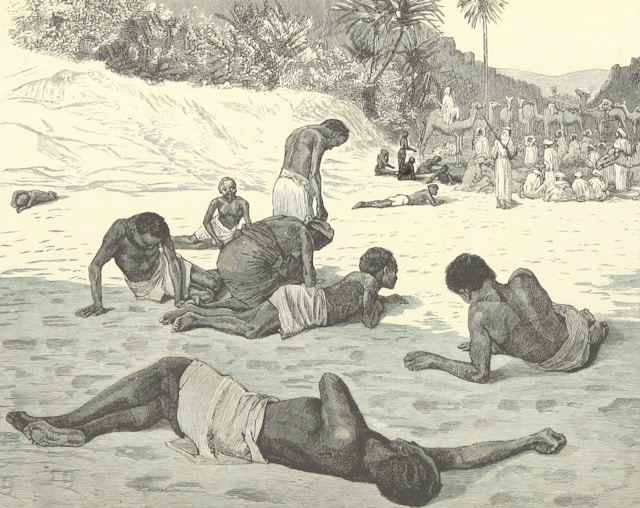The Trans-Atlantic Slave Trade and Its Impact on Nigeria
The Trans-Atlantic Slave Trade stands as one of the most tragic and significant chapters in human history. Over four centuries, millions of Africans were forcibly removed from their homelands and transported across the Atlantic Ocean to work as slaves in the Americas. Nigeria, being part of West Africa, was deeply entangled in this vast human tragedy.
Understanding how the slave trade operated in Nigeria helps us see how it shaped not only the country’s past but also its social and economic structures today. Let’s explore how it all began, the regions involved, and its lasting consequences.
How Did the Trans-Atlantic Slave Trade Begin?
The origins of the Trans-Atlantic Slave Trade date back to the late 15th century, when Portuguese explorers started navigating the West African coast in search of gold, spices, and new trade routes. Initially, their contact with African kingdoms revolved around trading gold, ivory, and other valuable goods.
However, as European colonies expanded in the Americas, there was a growing demand for labor on plantations producing sugar, cotton, tobacco, and other crops. Europeans turned to Africa as a source of labor, leading to the large-scale trafficking of human beings across the ocean.
Nigeria’s Key Regions in the Slave Trade
Several regions within present-day Nigeria became major hubs for slave trading. These coastal towns and ports were deeply involved in the business of buying and selling human beings to European traders. Let’s look at some significant locations:
Badagry
Badagry, situated along the coast of modern-day Lagos State, was one of the biggest slave markets in West Africa. Slaves captured from inland areas were brought here, sold to European traders, and loaded onto ships bound for the Americas. Badagry’s history remains an essential part of Nigeria’s historical tourism today, with museums and relics reminding visitors of its dark past.
Calabar
Calabar, located in present-day Cross River State, was another significant slave port. The city became a key center for British traders who established strong commercial ties with local chiefs and merchants. At its height, thousands of slaves were shipped from Calabar each year, contributing significantly to the trans-Atlantic slave network.
Bonny and Brass
Bonny and Brass, both in the Niger Delta region, were also prominent centers of slave trading. Local rulers and influential merchants in these areas negotiated deals with European traders, exchanging captives for items like firearms, textiles, alcohol, and various luxury goods.
How Were People Captured?
The process of capturing people for the slave trade varied. Many enslaved individuals were prisoners of war. African kingdoms often fought battles, and victors sold captives to European traders. Others were kidnapped during raids while traveling or working in their farms and villages. Sometimes, people were sold into slavery as punishment for crimes or to settle debts.
European traders seldom ventured far inland. Instead, they relied heavily on African middlemen—local traders, chiefs, and warriors—who organized the capture and transportation of captives to the coastal ports where Europeans awaited with their ships.
The Middle Passage
Once captured and sold, slaves faced the horrifying journey across the Atlantic Ocean known as the Middle Passage. They were chained below deck in overcrowded ships, often with barely enough room to move. Conditions were brutal. Disease, malnutrition, and abuse claimed many lives before the ships reached their destinations in the Americas.
Historians estimate that of the roughly 12 million Africans transported across the Atlantic, up to two million died during this harrowing voyage.
The Goods Exchanged in the Slave Trade
European traders brought goods such as cloth, beads, metal wares, rum, and guns to trade for human captives. Local African merchants and rulers acquired these goods and often used them to enhance their own power or expand their territories.
This system, known as the triangular trade, was immensely profitable for European nations and fueled the growth of industries in Europe. Sadly, it devastated African societies by depleting communities of their populations and disrupting traditional economies.
Impact on Nigerian Societies
The consequences of the slave trade on Nigeria were far-reaching:
- Population Loss: Millions of people were taken away, leading to depopulation and disruption of communities.
- Insecurity: Frequent raids, wars, and kidnappings spread fear across societies.
- Economic Changes: Traditional industries suffered, while the economy became more focused on the slave trade itself.
- Social Division: Relationships between ethnic groups were damaged as some communities collaborated with European traders while others were targeted for enslavement.
- Cultural Displacement: Many cultural practices and traditions were lost due to displacement and trauma.
Legacy of the Slave Trade
Even centuries after it ended, the Trans-Atlantic Slave Trade continues to shape Nigeria’s history and identity. Towns like Badagry and Calabar remain important historical sites, attracting researchers, tourists, and educators who seek to understand this period better.
Modern conversations about racism, human rights, and diaspora identity also trace their roots to the legacies of the slave trade. Descendants of enslaved Africans across the Americas often look back to places like Nigeria to reconnect with their heritage and understand their ancestral past.
Remembering the Past
In Nigeria today, efforts are ongoing to preserve the memory of the slave trade. Museums, monuments, and cultural festivals help educate new generations about this painful history. While it’s a difficult subject, understanding it is crucial for healing and building stronger societies.
By learning about the Trans-Atlantic Slave Trade, we honor the millions who suffered and lost their freedom. We also ensure that such a tragedy never happens again.
For more History and Story articles, check out our Story section and explore other important events that have shaped Nigeria’s journey through time.

